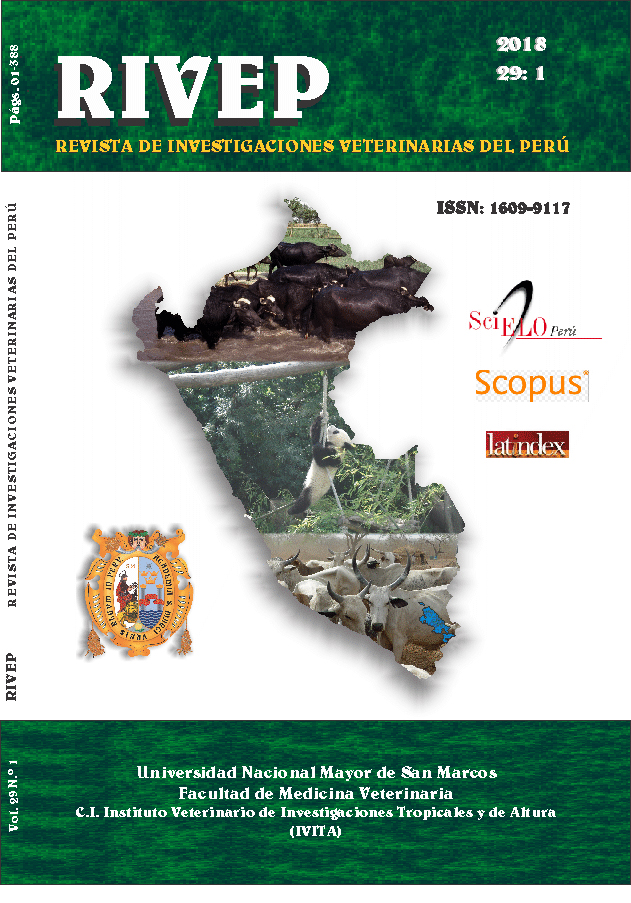Study of the radiographic osteology of the pipa frog (Pipa pipa)
DOI:
https://doi.org/10.15381/rivep.v29i1.14206Keywords:
frog, Pipa pipa, ostheology, radiologyAbstract
For the study of the radiographic osteology of the Pipa pipe frog, six adult specimens apparently in good health and kept in captivity were used. The MinXray® HF 100 X-ray equipment was used to obtain the radiographic images, analyze the radiographic characteristics and determine the size (length and width) of the head, post-cranial skeleton, shoulder girdle, anterior and posterior limbs. These frogs present the pre-sacral vertebrae I and II fused, and the sacrum fused to the thin urostil. Pipa pipe scapular waist is pseudo-firmisternal. It was possible to identify the bones that make up this region, including the coracoides. The relation between the measures of the tibial-fibula length added to the length of the foot with the corporal length corresponded to 85%.Downloads
Downloads
Published
Issue
Section
License
Copyright (c) 2018 Ricardo Grandez R., Melina Raffael A., Catalina Hermoza G., Roberto Valencia L.

This work is licensed under a Creative Commons Attribution-NonCommercial-ShareAlike 4.0 International License.
AUTHORS RETAIN THEIR RIGHTS:
a. Authors retain their trade mark rights and patent, and also on any process or procedure described in the article.
b. Authors retain their right to share, copy, distribute, perform and publicly communicate their article (eg, to place their article in an institutional repository or publish it in a book), with an acknowledgment of its initial publication in the Revista de Investigaciones Veterinarias del Perú (RIVEP).
c. Authors retain theirs right to make a subsequent publication of their work, to use the article or any part thereof (eg a compilation of his papers, lecture notes, thesis, or a book), always indicating the source of publication (the originator of the work, journal, volume, number and date).










